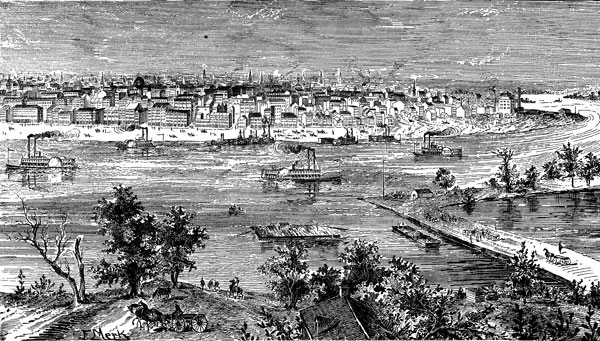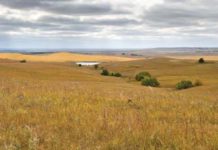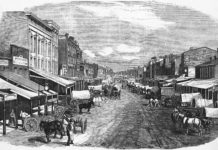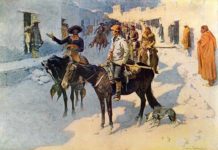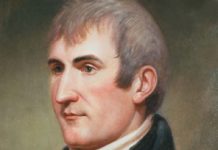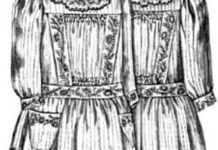What other American city can claim to having been under Spanish, French, and American rule all within the space of twenty-four hours? Also, had it not been for England Saint Louis might have been located in what became the state of Illinois on the Eastern Shore of the Mississippi River rather than on the western shore in Missouri. Before these situations occurred other events took place that concerned the fledgling village that would become Saint Louis, Missouri. It all really began in New Orleans, Louisiana.
Before Saint Louis was even a deam fifteen-year-old Marie Therese Bourgeois of New Orleans, on September 20, 1748, married Rene Chouteau. Of this union two sons were born, Rene and Auguste. It was Auguste who would have a part in the founding and building of the town the Osage Indians called “Chouteautown.”
After Madame Chouteau separated from her husband because of his abusiveness she met Pierre Laclede. They considered their union a legal marriage from which one son and three daughters were born.
In 1763 Laclede, with Antoine Maxent, formed the partnership of Maxent, Laclede and Company. They were granted a six-year exclusive trading privilege with the Indians of the Missouri and all the nations then living west of the Mississippi River above the Missouri River. Then Laclede, with a cargo of merchandise for the fur trade, set out to explore the Mississippi River up to the mouth of the Missouri River, seeking a location for a trading post. He chose the west side of the river because the French had recently ceded the land on the east side to England. No power on earth could induce this Frenchman to live under English rule.
The following spring thirty of Laclede’s men, led by fourteen year old Auguste Chouteau, began to clear the land and build the trading post. This western settlement, erected in the midst of a vast uncivilized wilderness, was the meager beginnings of Saint Louis.
Courageously Madame Marie Chouteau, like many women in future years who followed their men, now became a pioneer woman moving westward into the nearly unknown. To this cluster of hovels, with Laclede’s fur trading post at its center, she brought her sons and two daughters. The following March, there in the wilderness, a third daughter was born.
When Laclede first established his trading post he unknowingly placed it in an area under Spanish rule. It remained so until 1804 when the area was ceded to France, but it was a short-lived blessing. In that year on March 9th, before this area was formally transferred to what was then called Upper Louisiana, the citizens of Saint Louis watched as the Spanish flag was replaced by the French flag. Then, the following day, the French flag was lowered. In its place the American flag was raised as nine hundred Saint Louis citizens watched. Twenty years later the population had increased to four thousand but Madame Marie Chouteau did not see this growth. Six years earlier, Marie Chouteau had died, leaving five children, fifty-two grandchilden, and one hundred and sixty-nine great grandchildren.
Auguste Chouteau, in 1817, saw the first steamboat, the Pike, moor at the city landing. Because of his death in 1829 he missed the event, three-years later, of the side-wheeler Yellowstone’s departure from Saint Louis as it made the first successful steamboat voyage all the way up the Missouri River to Fort Union. It was now assured that this mighty river, said to be as “uncertain as the state of a woman’s mind,” was navigable as far as the mouth of the Yellowstone River.
From Saint Louis the American fur trade expanded under the direction of Auguste Chouteau and men like him. In time, other names would be associated with Missouri and take their place in history. On the wilder side would be Jesse and Frank James as well as Martha “Calamity” Jane Canary. Moses Austin came to Missouri in 1797. Arriving from Ireland, Robert Campbell of the Rocky Mountain Fur Trade Company made Saint Louis his home also.
From the east, north, and south, pioneers crossed Missouri and moved westward across the “Great American Desert” to settle the Far West. Later in the eighteen hundreds it was realized that the vast area between Missouri and the Rocky Mountains was not a desert but a seemingly endless prairie where farms and ranches and towns would flourish. It was then that the strong backs of Americans began to make this area home.


